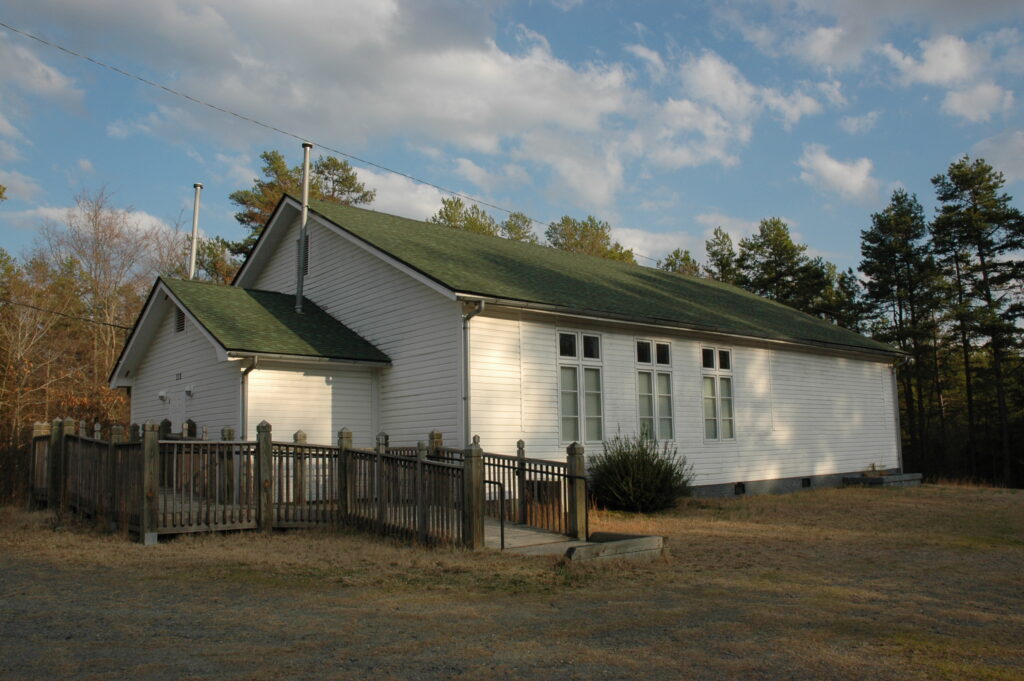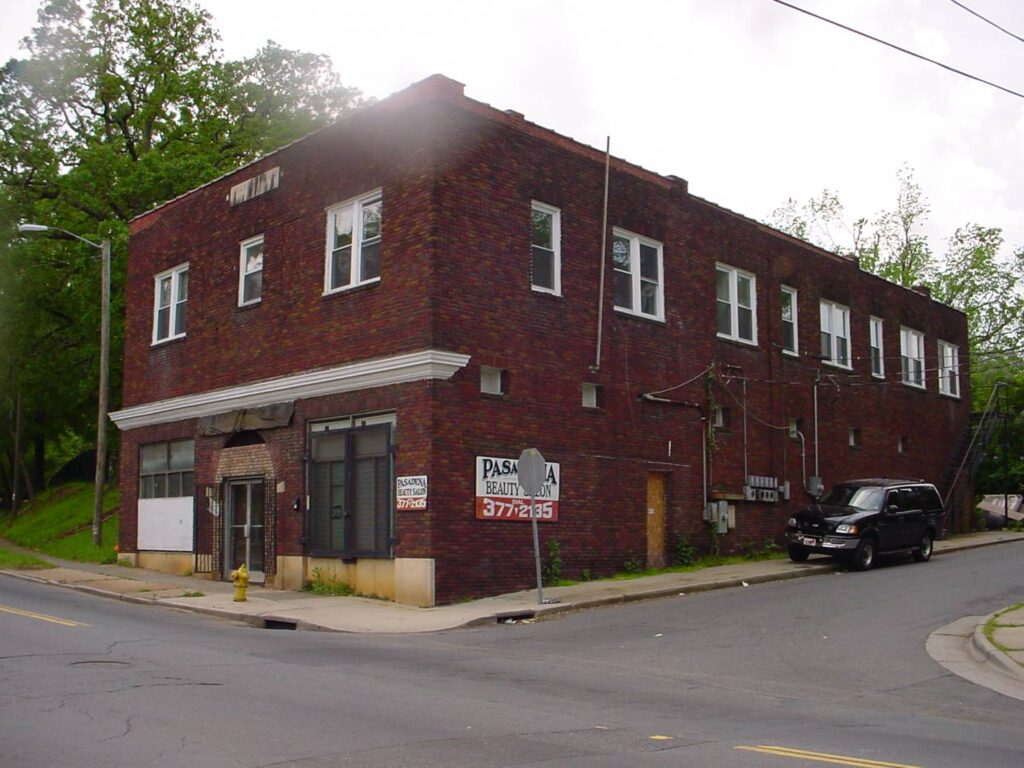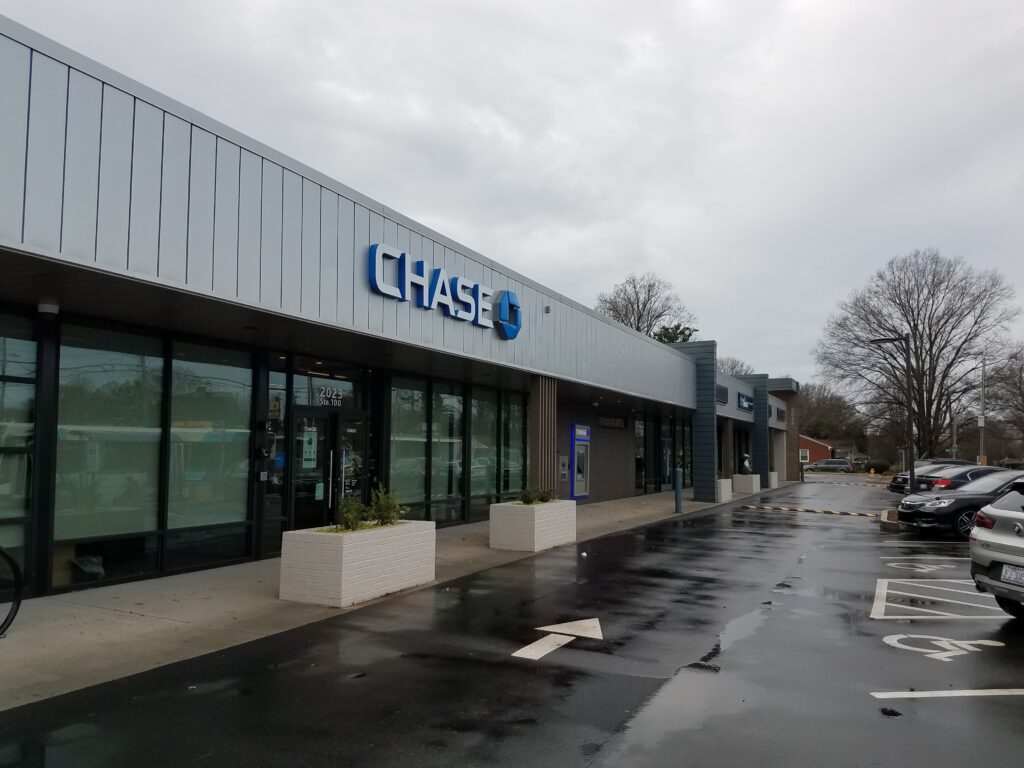A bank, a hair salon, and a community center. Some of Mecklenburg County’s most unassuming buildings hold remarkable stories of Black entrepreneurship and enterprise. In honor of Black History Month, learn more about these landmarks that are of particular significance to local and Black history.
Huntersville School #2

Address: 508 Dellwood Drive, Huntersville
Built: 1925
When Black students were denied the opportunity for an equitable education due to Jim Crow laws and segregationist policies of the early 20th century, educator Booker T. Washington and businessman Julius Rosenwald decided to do something about it. They developed schools – known as Rosenwald Schools – to educate Black students across the south. One of these was Huntersville School #2, known as “The Little School,” by former students and neighbors.
As a Rosenwald School, Huntersville School #2 had to adhere to specific design guidelines. The building is a frame construction that had four classrooms heated by a wood stove. Adjacent to the school were a playground, baseball field, and outdoor toilets. Students studied reading, writing, math, and natural sciences, as well as enjoyed three recess periods.
The building operated as a school until 1958. Residents of Pottstown, the predominantly African American community that provided the majority of the school’s student population and still surrounds the building, were instrumental in keeping the legacy alive. Since 1958, the building has been a gathering center and focal point for the African American community in northern Mecklenburg County, hosting recreational programs and camps for children, weddings, reunions, and a host of other events, as well as providing meeting and activity space for local churches and community groups.
Now owned and operated by the town of Huntersville as a recreation center, the building has continuously served the African American community for nearly a century.
Grand Theater

Address: 333 Beatties Ford Road, Charlotte
Opened: 1937
For African American movie-goers in the Jim Crow era, the Grand Theater was the place to go.
In the early years of Jim Crow, movie theaters typically put African American patrons in the less desirable rear or balcony seats. By the 1920s and 1930s, Black movie theaters began to open, offering moviegoers a place to enjoy films from whatever seat they chose, without fear of intimidation.
As one of the largest Black movie theaters in the area, the Grand Theater attracted crowds to almost every show, with many attendees coming from nearby Johnson C. Smith University. Movies ran from 1 to 9 p.m. seven days a week, with feature films like “Gone with the Wind” and westerns gracing the screen.
The Theater remained open into the 1960s, closing in 1967 after the end of Jim Crow and introduction of newer, larger movie theaters. Barber shops, beauty parlors and a convenience store moved into the space. Today, the building houses small businesses and apartments.
McDonald’s Cafeteria and Mini-Center

Address: 2023 Beatties Ford Road, Charlotte
Opened: 1970
Forget the Golden Arches—for community groups looking to meet and organize civil rights and social justice efforts, McDonald’s Cafeteria was the place to be.
The landmark was founded by John McDonald, a native Charlottean who opened the first iteration of his namesake restaurant in New York before opening one in his hometown. He opened the first McDonald’s Cafeteria on LaSalle Street in 1970 before moving to a larger location on Beatties Ford Road in 1981.
McDonald built a commercial center to house the original cafeteria and to provide space for several other Black-owned and operated businesses.
At the cafeteria, diners were treated like family. They enjoyed familiar comforts like roast chicken, macaroni and cheese, turnip greens and sweet potato pie. But the restaurant wasn’t just a place to enjoy a good meal and good service—it was a community hub. Politicians, civic groups, religious leaders, parents, and more all passed through the restaurant’s doors.
The original McDonald’s Cafeteria location closed in 1982 but the building – a classic example of mid-century modern design for a shopping plaza – remains. It has been adaptively reused and anchored by a Chase Bank.
These are just some of the sites that have been designated landmarks by the County’s Historic Landmarks Commission! Learn more about other local places significant to Black history.
